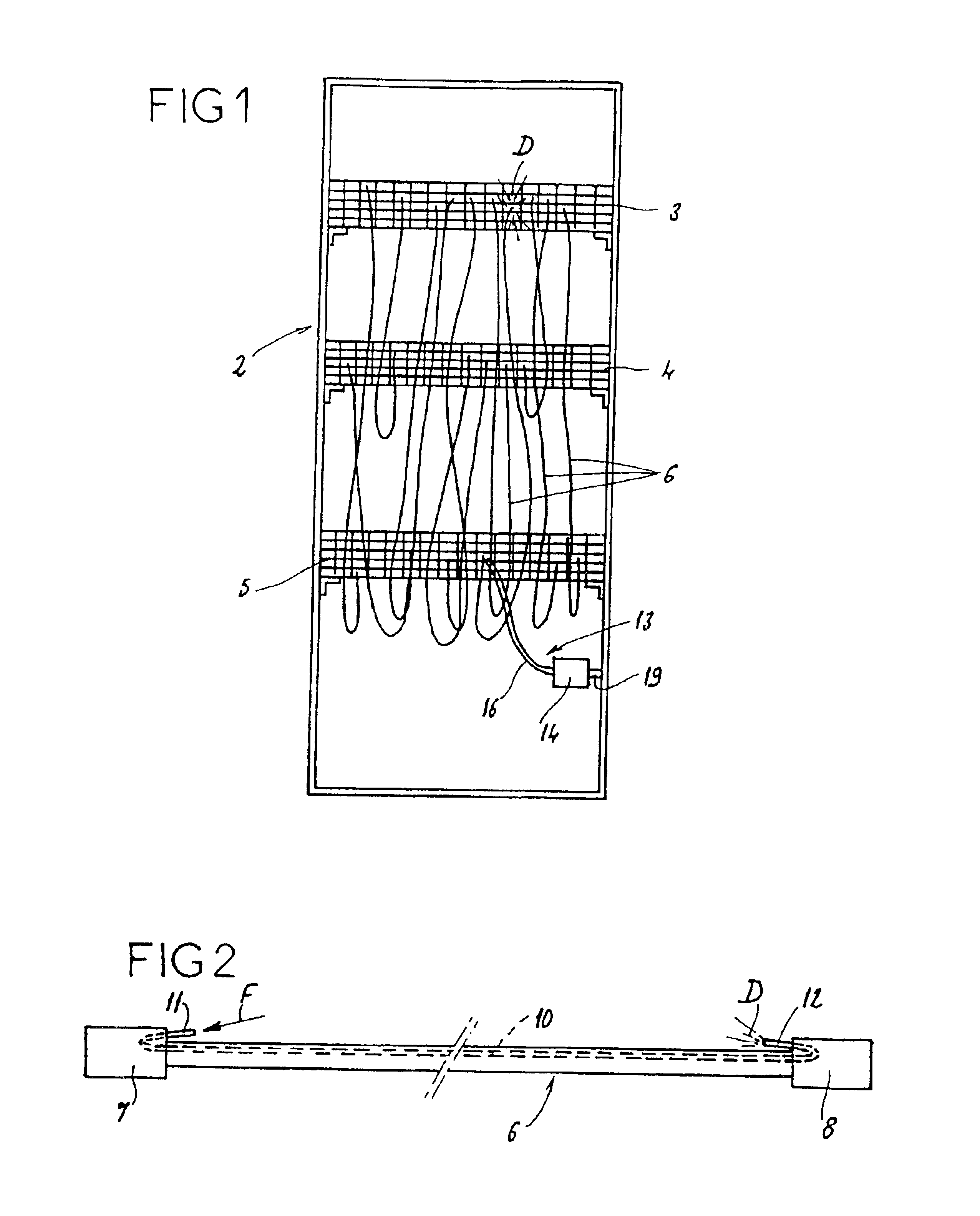Device for visual identification of cables or conduits
a technology for visual identification and cables, applied in the direction of line-transmission details, coupling device connections, instruments, etc., can solve the problems of insufficient options, difficult to follow, and first method is not very practical, and achieves the effect of simple and inexpensive manner
- Summary
- Abstract
- Description
- Claims
- Application Information
AI Technical Summary
Benefits of technology
Problems solved by technology
Method used
Image
Examples
Embodiment Construction
[0039]The invention is described below and illustrated by the drawing in the context of its particular application to locating the ends of computer jumper leads in a jumper cabinet.
[0040]FIG. 1 shows, very schematically, such a computer jumper cabinet, denoted overall by the reference 2. This jumper cabinet 2 comprises items of computer hardware 3, 4, 5, which are active or used for distribution purposes, connected together via usually a large number of jumper leads 6. As shown in FIG. 2, each jumper lead 6 possesses, at both its ends, respective connectors 7 and 8, such as standardized connectors of the “RJ-45” type, allowing the items of computer hardware 3, 4, 5 to be connected.
[0041]According to the invention, and as shown in FIGS. 2 to 4, each jumper lead 6 has, apart from conductors 9 extending from one connector 7 to the other 8, at least one optical fiber 10 which, again, extends over the entire length of this lead 6, from one end of the latter to the other.
[0042]The optical...
PUM
 Login to View More
Login to View More Abstract
Description
Claims
Application Information
 Login to View More
Login to View More - R&D
- Intellectual Property
- Life Sciences
- Materials
- Tech Scout
- Unparalleled Data Quality
- Higher Quality Content
- 60% Fewer Hallucinations
Browse by: Latest US Patents, China's latest patents, Technical Efficacy Thesaurus, Application Domain, Technology Topic, Popular Technical Reports.
© 2025 PatSnap. All rights reserved.Legal|Privacy policy|Modern Slavery Act Transparency Statement|Sitemap|About US| Contact US: help@patsnap.com



